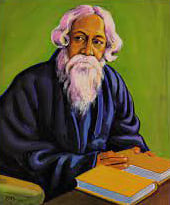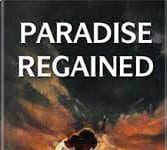R Tagore | Still Heart | Analytical Study
Rabindranath Tagore’s Poem ‘Still Heart’-An Analytical Study
The subject matter of the poem “Still Heart” by Rabindranath Tagore revolves around the act of surrendering control and acknowledging the presence of a higher power. The speaker metaphorically refers to the helm, which represents control or leadership. The speaker acknowledges that there comes a time when it is necessary to relinquish control and allow the higher power, referred to as “thee” or “my lord,” to take charge. The poem suggests that when this happens, what needs to be done will happen effortlessly and instantaneously.
The poem employs the literary device of personification by addressing the heart as if it is a separate entity. The heart represents the speaker’s emotional and inner self. The speaker advises the heart to accept defeat silently and find contentment in its current state. The heart is encouraged to view its stillness and placement as a stroke of good fortune, suggesting that finding peace in acceptance is a valuable quality.
The poem also utilizes vivid imagery to depict the speaker’s struggle with distractions and forgetfulness. The metaphor of lamps being blown out by a puff of wind symbolizes how easily the speaker’s focus and attention are disrupted. The act of trying to relight the lamps represents the speaker’s repeated attempts to regain focus and concentration. Through this imagery, the poem conveys the idea that getting caught up in distractions leads to forgetfulness and a loss of purpose.
However, the poem concludes with a resolution to be patient and wise. The speaker decides to wait in the dark, representing a state of stillness and introspection. By spreading their mat on the floor, the speaker prepares a space for the higher power to come and take a seat. This final stanza conveys the willingness to surrender, be receptive, and patiently await the arrival of divine guidance.
Overall, “Still Heart” explores the themes of surrender, acceptance, and finding contentment in letting go of control. The poem utilizes metaphors and vivid imagery to convey the speaker’s struggles with distractions and the desire for stillness and inner peace. It ultimately emphasizes the value of embracing a state of acceptance and patiently awaiting guidance from a higher power. 0 0 0
R Tagore Still Heart Analytical Study
N.B. The article ‘R Tagore Still Heart Analytical Study‘ originally belongs to the book ‘Analytical Studies of Selected Poems of Rabindranath Tagore‘ by Menonim Menonimus.
Books of Literary Criticism by M. Menonimus:
- World Short Story Criticism
- World Poetry Criticism
- World Drama Criticism
- World Novel Criticism
- World Essay Criticism
- Indian English Poetry Criticism
- Indian English Poets and Poetry Chief Features
- Emily Dickinson’s Poetry-A Thematic Study
- Walt Whitman’s Poetry-A Thematic Study
- Critical Essays on English Poetry
- Tawfiq al-Hakim’s Novel: Return of the Spirit-An Analytical Study
- Tawfiq al-Hakim’s Novel: ‘Yawmiyyat Naib Fil Arayaf’-An Analytical Study
- Analytical Studies of Some Arabic Short Stories
- A Brief History of Arabic Literature: Pre-Islamic Period (500 AD-622 AD)
- A Brief History of Arabic Literature: Early Islamic Period (622 AD-661 AD)
- Reviews on William Shakespeare’s Works
- Reviews of Charles Dickens’ Works
- Reviews of John Milton’s Literary Works
- Reviews of Some Iconic Travelogues
- Shakespeare’s Sonnets-Critical Studies
- Analytical Studies of Selected Poems of Sarojini Naidu
- Analytical Studies of Selected Poems of Rabindranath Tagore …
Additional Searches :
- Rabindranath Tagore
- 10 Timeless Poems by Rabindranath Tagore
- Rabindranath Tagore as a Poet
- Rabindranath Tagore Critical Analysis
- Rabindranath Tagore Poems
- Gitanjali by Rabindranath Tagore
- Walk Alone by Rabindranath Tagore
.











